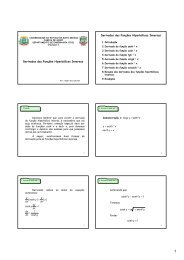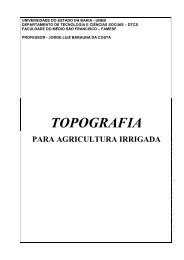Anuário Brasileiro do Arroz 2011 - Unemat
Anuário Brasileiro do Arroz 2011 - Unemat
Anuário Brasileiro do Arroz 2011 - Unemat
You also want an ePaper? Increase the reach of your titles
YUMPU automatically turns print PDFs into web optimized ePapers that Google loves.
Rio Grande <strong>do</strong> Sul Rice Institute (Irga). In the current season,<br />
the result derived from the rice fields is expected to<br />
reach 8.832 million tons, with productivity rates reaching<br />
a record average of 7.600 kilos per hectare.<br />
The performance is directly linked to climatic conditions,<br />
which favored timely plantings, within the period<br />
recommended by researcher teams. Dry weather conditions,<br />
along with plenty of sunshine and dams filled with the<br />
winter rains, ensured efficient irrigation. Cláudio Brayer<br />
Pereira, president of Irga, explains that the behavior of<br />
the climate broadened the positive technology impact on<br />
the cultivations, improving management requirements<br />
throughout the different stages of the rice fields.<br />
On the other hand, Renato Rocha, president of the<br />
Federation of Rice Growers’ Associations of Rio Grande<br />
<strong>do</strong> Sul (Federarroz), emphasizes that, inside the farm<br />
gate, producers have been investing in different technologies,<br />
which translates into high yields and quality<br />
kernels. “Our real problem is income. The production cost<br />
is high, taxes levied on the inputs and the crop itself are<br />
exaggerated, there are no incentives for producing, notwithstanding<br />
our exceptional share of 65% in the entire<br />
national crop and 90% in all quality kernels consumed in<br />
Brazil”, he complains.<br />
THE SIZE OF THE CHALLENGE The president<br />
of Federarroz, Renato Rocha, mentions that the challenge<br />
of Rio Grande <strong>do</strong> Sul boils <strong>do</strong>wn to the question of exporting<br />
at least 10% of its production volumes (equivalent to<br />
almost 900 thousand tons in the <strong>2011</strong>/12 season), along<br />
with investments in warehouses and efforts to recover the<br />
prices to levels compatible with the production costs. “Over<br />
the first four months in <strong>2011</strong>, producers incurred losses of<br />
up to R$ 10 per sack, if we compare average production<br />
costs and sales prices”, he points out.<br />
In the president’s view, taxation, deficiencies in warehousing<br />
infrastructure and logistics, along with the<br />
absence of an agricultural policy focused on the sector,<br />
besides excessive rice imports, are to blame for the<br />
crises. “This opens the gate of the Brazilian market to<br />
unfair competition from Mercosur countries and affects<br />
the competitive edge of our product, both at home and<br />
abroad”, he explains. He also insists that, via national<br />
and state sectorial chambers, the production chain is<br />
sparing no effort in the construction of appropriate policies<br />
focused on selling the crop, whilst ensuring profitability<br />
and a reduction to field costs, all measures that<br />
are bound to broaden our capacity to compete with our<br />
major competitors.


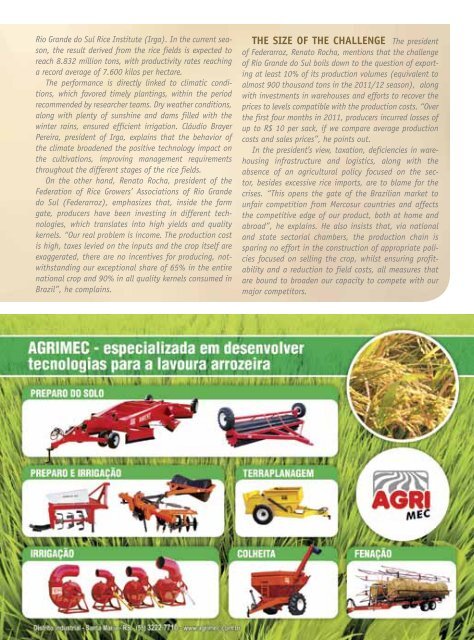
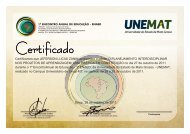
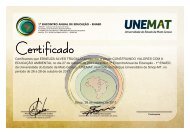
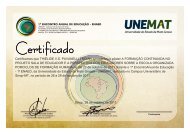
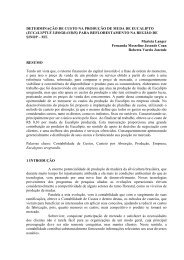
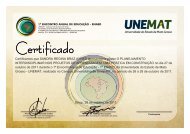
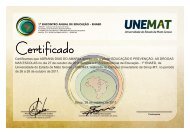
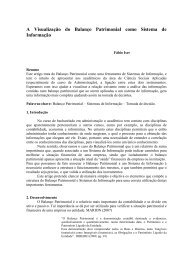
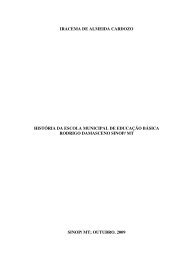

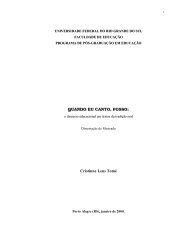
![Aula 31 - Funções Hiperbólicas [Modo de Compatibilidade] - Unemat](https://img.yumpu.com/14334654/1/184x260/aula-31-funcoes-hiperbolicas-modo-de-compatibilidade-unemat.jpg?quality=85)
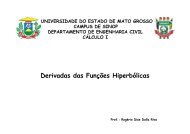
![Aula 31 - Funções Hiperbólicas [Modo de Compatibilidade] - Unemat](https://img.yumpu.com/14332146/1/190x135/aula-31-funcoes-hiperbolicas-modo-de-compatibilidade-unemat.jpg?quality=85)
